If you’re after the best camera phone, you’re not alone. Snapping up one of the best smartphones for photography is something that more of us are doing, as the camera remains one of the most important features — along with battery life — for most people. Thankfully, with each upcoming phone upgrade, comes a whole range of new camera specs and features.
The trouble is, there are thousands of handsets out there from budget to super-premium, and every entry on our best smartphones list promises to provide a great camera experience. The reality, of course, is that not all smartphones are made equal, especially when it comes to camera performance. In fact, with so many similar handsets out there, a smartphone’s camera is one of the main differentiating factors between them.
With all that said, we’ve rounded up some of the best top-tier smartphone cameras for photography currently available, based on years of expertise. If you’re after the best cameraphone, look no further than this lot…
Why you can trust Stuff: Our team of experts rigorously test each product and provide honest, unbiased reviews to help you make informed decisions. For more details, read how we test and rate products.
Quick list: what are the best camera phones?
The best camera phones you can buy today:
1. Samsung Galaxy S24 Ultra
| Samsung Galaxy S24 Ultra specs | |
|---|---|
| Screen | 6.8in, 3200×1440 AMOLED w/ 1-120Hz LTPO adaptive refresh, 2600 nits |
| CPU | Qualcomm Snapdragon 8 Gen 3 For Galaxy |
| Memory | 12GB RAM |
| Cameras | 200MP, f/1.7 main w/ Quad pixel AF, OIS + 50MP, f/3.4 periscope zoom w/ dual pixel AF, OIS, 5x optical zoom + 10MP, f/2.4 zoom w/ dual pixel AF, OIS, 3x optical zoom + 12MP, f/2.2 ultrawide rear 12MP, f/2.2 front w. dual pixel AF |
| Storage | 256GB/512GB/1TB on-board |
| Operating system | ANdroid 14 w/ OneUI 6.1 |
| Battery | 5000mAh w/ 45W wired, 15W wireless charging |
| Dimensions | 162x79x8.6mm, 232g |
With a 50MP main snapper, 10MP telephoto and 12MP ultrawide, the Galaxy S24’s cameras are effectively now three years old. The lead camera keeps its f/1.8 aperture lens, dual pixel autofocus tech and optical image stabilisation; the 3x optical zoom telephoto tops out at f/2.4, with PDAF and OIS; and the ultrawide sticks with f/2.2 glass. The exact same setup first appeared on the Galaxy S22.
Samsung claims the S24 Ultra’s shooting experience is unique thanks to an imaging NPU (neural processing unit) — and our review confirms it. This is the best Samsung smartphone camera experience to date, and one of the best money can currently buy.
It’s almost a given that shots in both bright and dark conditions are excellent, with the combination of Samsung’s software and hardware managing to turn day into night with apparent ease. Where the S24 Ultra really stands out though, is its sheer flexibility, thanks to that incredibly generous 10x optical zoom, made possible by its periscope camera setup. It’s so good, in fact, that we even managed to capture a detailed shot of the moon at 85x zoom, which is a feat no other smartphone on this list can come close to matching.
Its superb all-around performance, coupled with extra tricks like an amazing zoom, places the S24 Ultra among the best smartphones for photography in any situation.
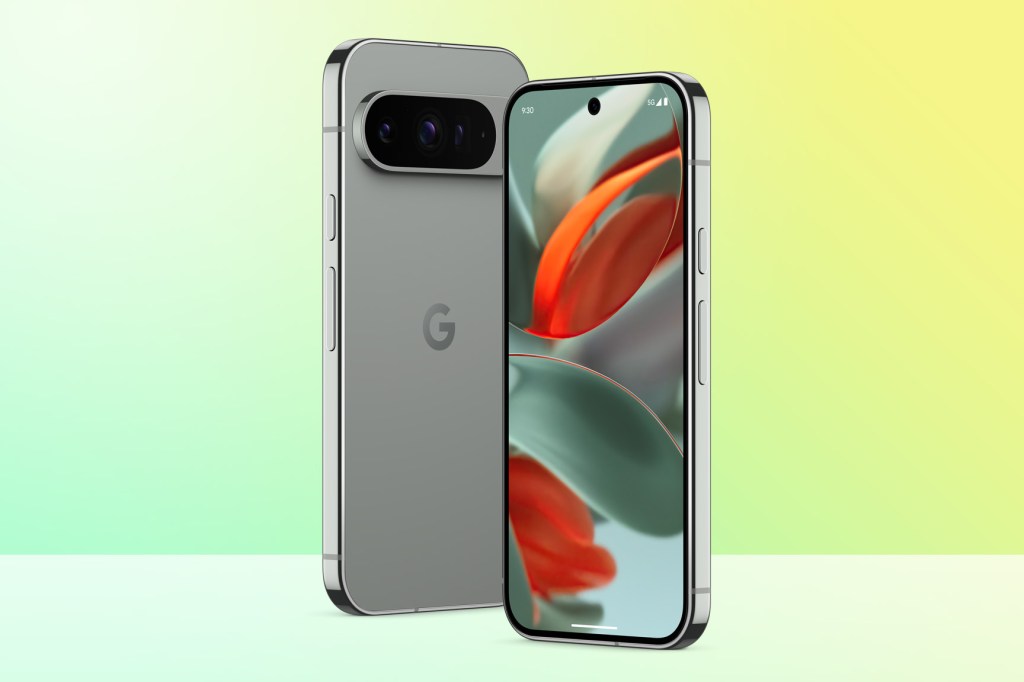
2. Google Pixel 9 Pro
| Google Pixel 9 Pro specs | |
|---|---|
| Screen | 6.3in, 1280×2856, 1-120Hz AMOLED |
| CPU | Tensor G4 |
| Memory | 16GB RAM |
| Cameras | 50MP, f/1.7 w/ dual pixel PDAF, OIS, laser AF + 48MP, f/2.8 periscope telephoto w/ 5x zoom, OIS, dual pixel PDAF + 48MP, f/1.7 ultrawide w/ dual pixel PDAF rear 42MP, f/2.2 w/ PDAF front |
| Storage | 128/256/512GB/1TB |
| Operating system | Android 14 |
| Battery | 4700mAh w/ 27W wired, 21W wireless charging |
| Dimensions | 152.8x72x8.5mm, 199g |
The Google Pixel 9 Pro truly shines with its exceptional camera capabilities, making it a standout in the smartphone market. This latest model continues Google’s tradition of outstanding mobile photography, and in our experience, it takes this to new heights with a series of impressive upgrades.
The Pixel 9 Pro’s camera system includes a 50MP main sensor that captures sharp, detailed images, but the real highlights are the 48MP ultrawide and periscope telephoto lenses. The ultrawide lens offers an expansive field of view, perfect for landscape and group shots, while maintaining excellent colour consistency and minimal distortion. The 48MP telephoto lens, with its 5x optical zoom, is a major upgrade, providing clear, sharp images even at higher magnifications.
Google’s computational photography remains a key strength. The Pixel 9 Pro features advanced AI tools like Magic Editor and Best Take, which simplify photo editing and enhance image quality. The Magic Editor allows for automatic reframing and cropping suggestions, and the ‘Add Me’ feature helps you seamlessly insert yourself into group photos. These tools make photo adjustments effortless, although the results can vary in precision.
For selfies, the 48MP front camera delivers crisp, vibrant shots with accurate skin tones, even in low light. Video recording is equally impressive, supporting 8K at 30fps and 4K at 60fps, ensuring versatile options for both casual and more serious videographers.
Overall, the Pixel 9 Pro’s camera capabilities are exceptional, reinforcing Google’s reputation for leading-edge mobile photography. Whether you’re capturing everyday moments or pushing the limits with advanced features, the Pixel 9 Pro offers a top-tier camera experience.
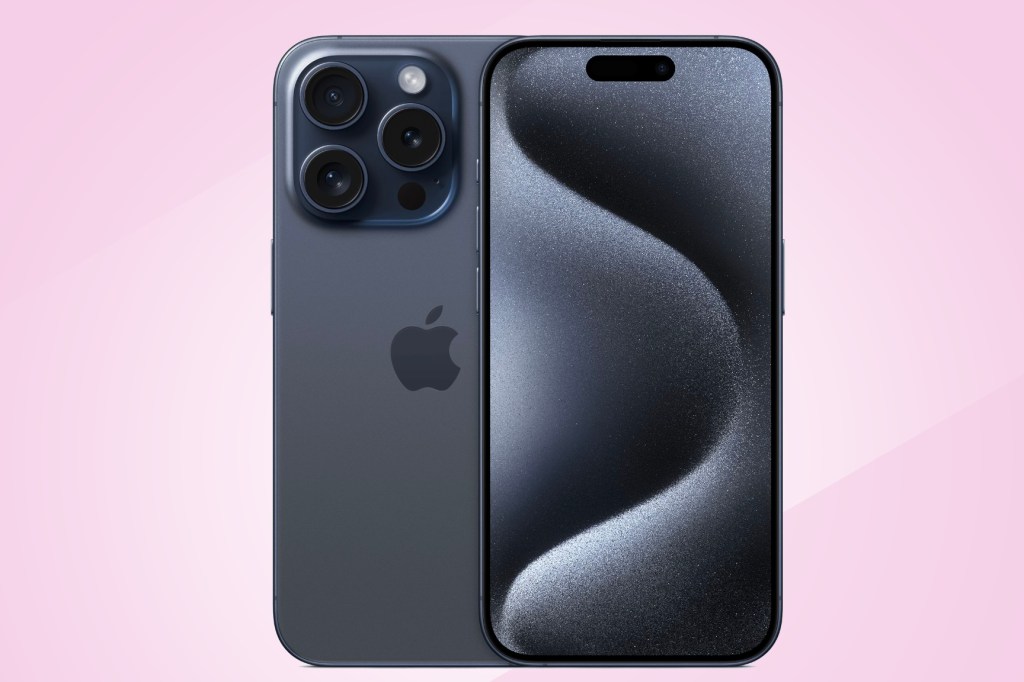
3. Apple iPhone 15 Pro Max
| Apple iPhone 15 Pro Max specs | |
|---|---|
| Colours | Natural Titanium/Blue Titanium/White Titanium/Black Titanium |
| Display | 6.7in 2796×1290 OLED HDR at 460ppi |
| Processor | A17 Pro |
| RAM | 8GB |
| Storage | 256GB/512GB/1TB |
| OS | iOS 17 |
| Cameras | 48MP ƒ/1.78 main, 12MP ƒ/2.2 ultra wide, 12MP ƒ/2.8 telephoto (5× optical zoom in) rear; 12MP ƒ/1.9 front |
| Battery | 4,441 mAh (est.) |
| Dimensions | 76.7×159.9×8.25mm (3.02×6.29×0.32in) |
| Weight | 221g (7.81oz) |
| Connectivity | USB-C (supports charging, DisplayPort, and USB 3) |
Apple’s iPhone cameras have been top-notch for years, and the iPhone 15 Pro Max is no exception, bringing with it a couple of key improvements that make it one of the best smartphone cameras in the world right now. A triple-camera affair made up of wide, ultrawide, and telephoto lenses, it has the show-stealing 48MP seen on last year’s top-tier model. The result is even clearer images with accurate colours and lighting, with an improvement in low-light photography to boot.
The biggest improvement for the Pro Max is a new periscope telephoto lens, which provides 5x optical zoom abilities up there with the very best smartphones. Elsewhere, you’ll find Apple’s Photonic Engine which has been upgraded to work even better software magic to improve shots in mid and low-light settings.
Ultimately, this is easily the best cameraphone Apple has ever made. If you want to sacrifice a little battery life and screen size then you can also snap up the cheaper iPhone 15 Pro, which shares most of the same camera features as its Max brother – you just have to make do with a 3x zoom lens instead.
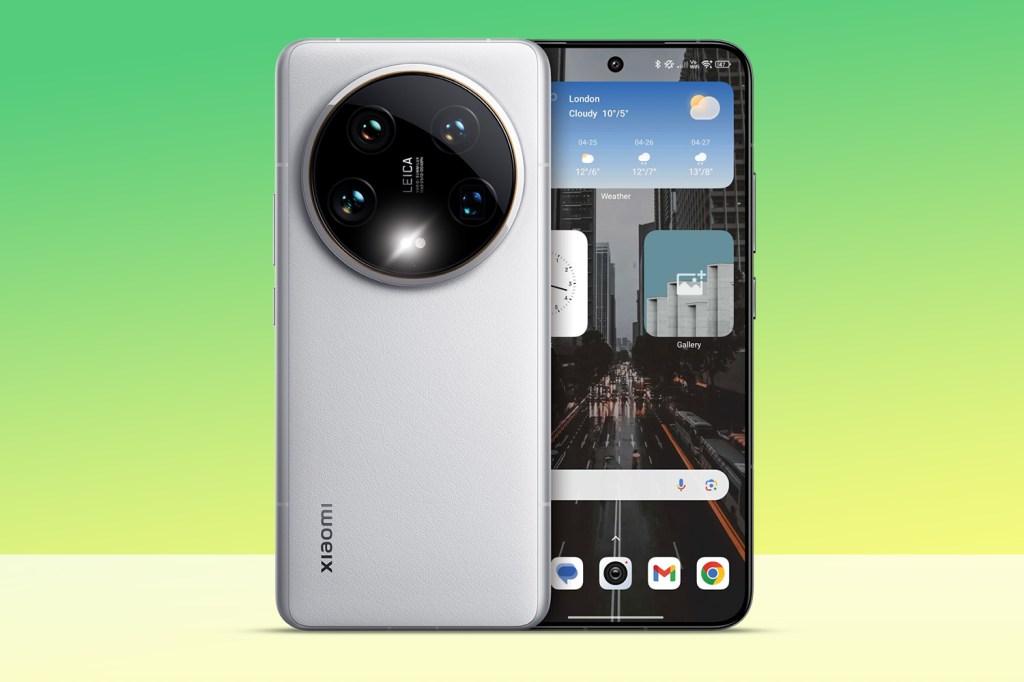
4. Xiaomi 14 Ultra
| Xiaomi 14 Ultra specs | |
|---|---|
| Screen | 6.73in, 3200×1440 AMOLED w/ 1-120Hz LTPO, 3000 nits |
| CPU | Qualcomm Snapdragon 8 Gen 3 octa-core |
| Memory | 16GB RAM |
| Cameras | 50MP, 23mm, f/1.6-f/4.0 main w/ OIS + 50MP, 12mm, f/1.8 ultrawide w/ macro focus + 50MP, 75mm, f/1.8 telephoto w/ 3x optical zoom, OIS + 50MP, 120mm, f/2.5 telephoto w/ 5x optical zoom, OIS 32MP, f/2.0 front |
| Storage | 512GB on-board |
| Operating system | Android 14 |
| Battery | 5000mAh w/ 90W wired, 80W wireless charging |
| Dimensions | 161x75x9.2mm, 229.5g |
Xiaomi isn’t the only smartphone maker to have squeezed in a 1in camera sensor into its latest top-tier model – but it is the only one that’ll officially sell you a photography kit to make the most of it. The official case/camera grip combo are a must-buy, adding a physical shutter button, zoom lever and exposure controls as well as a handy portable power bank.
The Xiaomi 14 Ultra’s three other rear cameras are stunners too, with dedicated lenses for 3.2x portraits and 5x telephoto shots, and an ultrawide expanding your horizons. Leica-backed image processing makes every shot distinctive, in any lighting condition. Little else comes close for detail at a distance, or convincing depth blur.
It’s a fantastic phone everywhere else, with a vegan leather finish, high refresh rate OLED display, whip-crack quick Snapdragon 8 Gen 3 CPU and a reasonably beefy battery – though rivals do manage to make their cells last a little longer between top-ups. It’s a premium device, and carries a premium price, but phone photographers should see it as a price worth paying.
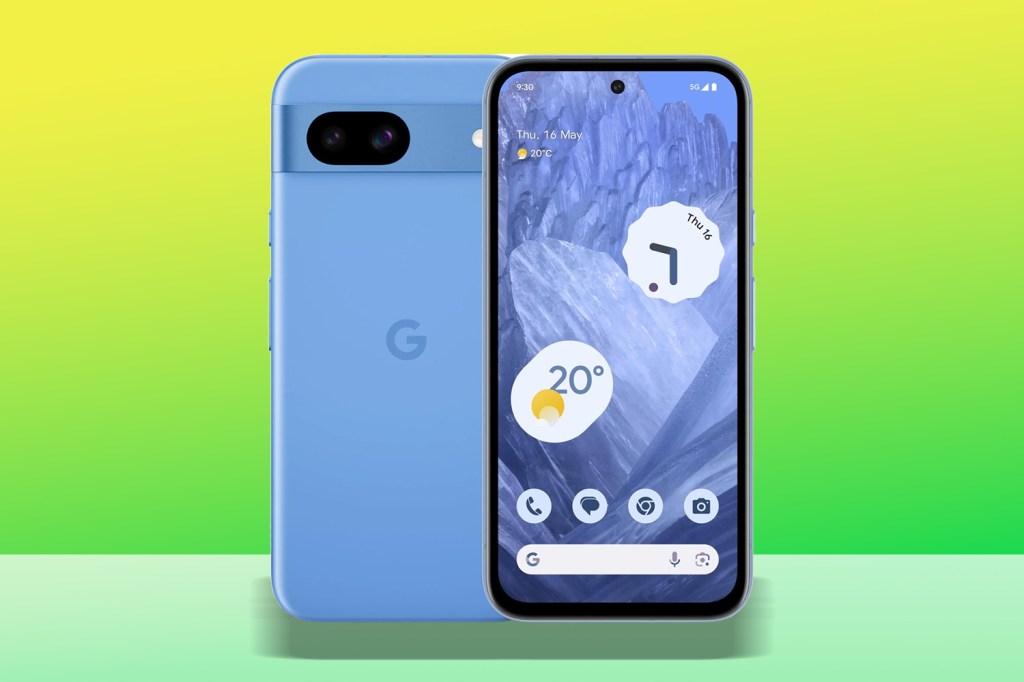
5. Google Pixel 8a
| Google Pixel 8a specs | |
|---|---|
| Screen | 6.1in 2400×1080 OLED w/ 120 Hz |
| CPU | Google Tensor G3 octa-core |
| Memory | 8GB RAM |
| Cameras | 64MP, f/1.9 main w/ OIS + 13MP,f/2.2 ultrawide rear 13MP, f/2.2 front |
| Storage | 128GB on-board |
| Operating system | Android 14 |
| Battery | 4492 mAh w/ 18W wired, 7.5W wireless charging |
| Dimensions | 152x73x8.9mm, 188g |
Google has taken the Pixel 8a even further upmarket than last year’s A-series model, borrowing more design nous from the pricier Pixel 8 and sharing some AI smarts with the Pixel 8 Pro flagship. Its 64MP main camera sensor is again bespoke to the A-series phone, but the pixel-binning smarts used to improve low-light shots are very much in keeping. Combined with the firm’s typically excellent software, it’s one of the best bang-for-buck photography experiences around.
Powerful algorithms squeeze the most out of dual snappers. Shots from both cameras are stuffed with detail, wonderfully exposed, with no hint of unsightly noise, and they perform well in dim conditions too. Autofocus is quick, and auto HDR does a brilliant job of exposing bright skies without losing detail in shadows. Skin tones are impressive as well, with Google using a dedicated Real Tone algorithm for more accurate results.
There’s no dedicated telephoto (aka, zoom) camera, which is to be expected at this price, but considering you still get the same software tricks found in the more expensive Pixel 8 Pro (like Magic Eraser), it’s hard to complain. Easily one of the best cameraphones around for the money you’re paying.
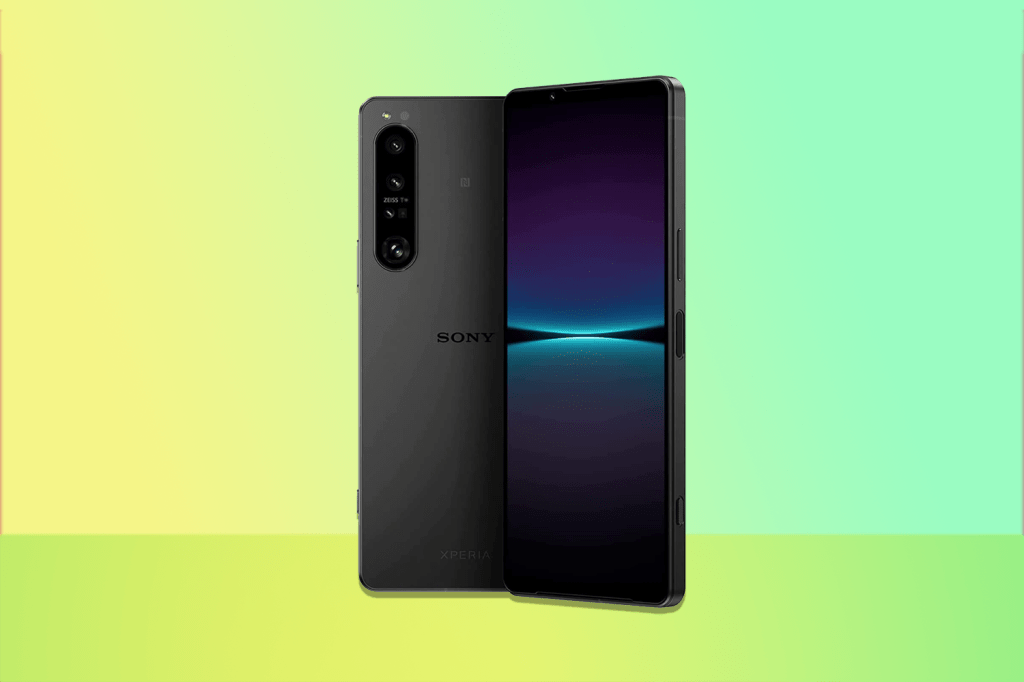
6. Sony Xperia 1 VI
| Sony Xperia 1 VI specs | |
|---|---|
| Screen | 2340×1080 OLED w/ 120Hz, 19.5:9 aspect ratio |
| CPU | Qualcomm Snapdragon 8 Gen 3 octa-core |
| Memory | 12GB RAM |
| Cameras | 48MP, f/1.9, 24mm wide w dual pixel PDAF, OIS + 12MP, f/2.2, 16mm ultrawide w/ dual pixel PDAF + 12MP, f/2.3 85mm – f/3.5 170mm telephoto w/ dual pixel PDAF, OIS, 3.5x-7.1x continuous optical zoom rear. 12MP, f/2.0, 24m front |
| Storage | 256GB on-board, microSD expansion |
| Operating system | Android 14 |
| Battery | 5000mAh non-removable w/ 30W wired charging, wireless charging, reverse wireless charging |
| Dimensions | 162x74x8.2mm, 192g |
Sony’s mobile division usually does things its own way, but 2024 saw it finally let 21:9 aspect ratios and 4K resolution panels go in favour of a more mainstream display. A 19.5:9 OLED with a Full HD+ pixel count is still worth getting excited about, thanks to a 1-120Hz LTPO adaptive refresh rate and a much higher peak brightness. It does wonders for battery life, making this is true two day phone for most users.
The Xperia 1 VI keeps its predecessor’s 52MP lead camera sensor and twin 12MP shooters – one ultrawide and one variable zoom telephoto. This time around zoom tops out at 7.1x (up from 5.2x), letting you get much closer to your subject before digital trickery comes into play. Fast focusing and high burst speeds continue to set it apart from rivals, too.
As expected from Sony handsets, you’ll get the very best out of its cameras when using the Pro mode, tweaking settings until you reach some seriously impressive results. This year’s auto mode is a lot more accomplished, though, so point-and-shoot photographers are also well served.
What to look for when choosing the best camera phone
If you’re choosing a smartphone based solely on its picture-taking abilities, there are several different things you’ll have to consider compared to choosing a regular smartphone.
One of the primary specifications to look at is the resolution of its cameras. Higher-megapixel cameras generally result in clearer and more detailed images. However, it’s essential to remember that the megapixel count isn’t the sole determinant of image quality. Other factors, such as sensor size and image processing capabilities, also significantly impact the final image.
Larger sensors can capture more light and detail, resulting in better image quality, especially in challenging lighting conditions. Therefore, when comparing camera phones, opting for devices with larger image sensors can lead to improved overall performance and image quality.
And advanced computational photography features (such as those found on the Google Pixel phones) can significantly enhance photos by optimizing exposure, colour accuracy, and dynamic range.
So, if you want to make sure you’re buying a good camera phone, look at the same images we take in our reviews, rather than just basing your decision off of specs.
You’ll also want to consider the lens system on the phone you’re considering. Most phones have a wide-angle camera for general snaps, but many an joined by an additional lens and sensor. Some have an ultra-wide angle lens, which is great for landscape photography, while others opt for a telephoto (zoom) lens which is useful for getting up close to the action, some premium phones even have all three!
Getting technical now, the aperture size affects how much light the lens can gather. Typically measured in f-stop numbers, a lower f-stop indicates a wider aperture, allowing more light to enter the lens. A wider aperture is advantageous for low-light photography and achieving shallow depth-of-field effects, where the subject is sharp while the background is blurred. Now, although the aperture size is important when choosing a ‘proper’ camera lens, it’s not as important when choosing a smartphone camera where the impact on the image isn’t as pronounced as it is in traditional photography.
Optical Image Stabilization (OIS), however, is an important feature to look for in a camera phone. OIS helps reduce blurriness caused by hand movements while taking photos or recording videos. This feature is particularly valuable in low-light situations or when shooting videos without a tripod.
Modern camera phones offer a variety of features and shooting modes to enhance the photography experience. In my opinion, the three key ones to look out for are High Dynamic Range (HDR) for better exposure in high-contrast scenes, portrait mode for professional-looking portraits with blurred backgrounds and night mode for improved low-light performance.
For those who frequently shoot videos with their phones, it’s essential to consider the video recording capabilities as well. Factors such as resolution (you’ll want to record 4K footage for the best detail), frame rate, and the availability of stabilization features should be taken into account.
Finally, don’t overlook the front-facing camera, as getting a good selfie is important as well. Look for the same specifications previously mentioned, as well as any selfie-specific modes or enhancements offered by the phone. A good front camera should ensure clear and flattering self-portraits and video calls.
If you’re looking to save money, you can check out our best budget camera phone guide.
What are the best camera phone brands?
The best camera phone brands include Apple, Samsung, Google, and Sony. These four consistently produce smartphones with the most advanced camera tech and the latest innovative features.
Each brand excels in a different area. For example, Google’s Pixel series is celebrated for its computational photography prowess, delivering exceptional photo quality with features like Best Shot, Night Sight and Super Res Zoom. Apple, especially in their iPhone Pro series, excels in both hardware and software, offering features like ProRAW, Night mode, and superior video capabilities. Samsung, on the other hand, is renowned for its versatile camera systems, including ultra-wide and periscope telephoto lenses. Finally, Sony’s Xperia line includes expertise in imaging technology from its Alpha cameras, offering features like real-time Eye AF and professional-grade manual controls.
What camera phone has the best video and vlogging capabilities?
We think the iPhone 14 Pro is the top choice for video and vlogging capabilities. It excels with features such as 4K video recording at various frame rates, including 24fps, 30fps, and 60fps, making it suitable for both cinematic and high-action shots. The phone’s advanced stabilization tech, making use of optical image stabilization, ensures smooth and stable footage in all lighting conditions and environments. Additionally, the ProRAW and ProRes recording options provide professional-grade video files that are easy to edit.


